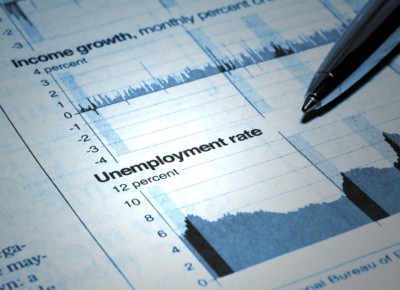Strong employment means a strong economy, a key to further growth in ready-mixed concrete production.

In yet another indicator of the amazing, underlying strength in our economy, the big news last week was that America added 213,000 jobs in June, well above economists’ consensus forecasts of 195,000. But the unemployment rate ticked up to 4% from 3.8%, and average hourly earnings rose 2.7% from a year earlier. In another sign of vigorous demand for labor, the results for April and May were revised higher by a total of 37,000 new jobs, bringing the average for the past three months to 211,000.
So how does the unemployment rate go up when so many jobs were added? Well, the continued robust job creation showed that, despite complaints from companies nationwide about the worsening labor shortage, there remained untapped pockets of idled workers able to reenter the jobs market after nearly a decade of economic recovery. But the closely watched labor force participation rate also edged higher to 62.9%, while the number of people counted as unemployed rose to 6.6 million, up nearly a half million.
There is a very real question about how much slack is left in the labor force, even after years of strong hiring. One broader measure of underemployment, the U-6 rate that includes discouraged and part-time workers, edged up to 7.8% in June from 7.6% a month earlier. Labor force participation rates also remain well below pre-crisis levels, suggesting there’s still more room for people to enter the workforce. That rate climbed last month.
And while I have written recently about the specter of upward wage pressure, once again the news is encouraging on the wage growth, as it isn’t making as much of a difference for workers as some would hope. Wages rose 2.7% from a year earlier in June, below the 2.8% increase economists had expected. Compared to a month earlier, wages grew 0.2%. Inflation is also picking up and could soon outpace wages, meaning workers likely aren’t feeling any richer.
In drilling down deep into the report, it appears the manufacturing labor market is strong, suggesting key parts of the U.S. economy haven’t felt a huge impact from tariffs just yet. The manufacturing sector added 36,000 jobs in June, an acceleration from the 19,000 jobs added in the sector in May. So it appears that escalating trade tensions between the U.S. and China haven’t yet deterred employers from hiring, at least for now. Moreover, it appears from the report that the Federal Reserve has little reason to be worried that the economy is going to overheat. Even as the U.S. continues to add jobs at a rapid clip, wage growth has remained benign and there are signs more workers are returning to the labor force. Given that, central bankers aren’t likely to want to ramp up the pace of rate hikes aggressively.
So while our industry continues to complain about labor shortages, especially drivers, it appears the U-6 number offers a glimmer of hope that more workers will enter the workforce, which is what pushed up the unemployment rate 0.2 percent last month. Strong employment means a strong economy, a key to further growth in ready-mixed concrete production.
About the Author
Pierre G. Villere serves as president and senior managing partner of Allen-Villere Partners, an investment banking firm with a national practice in the construction materials industry that specializes in mergers & acquisitions. He has a career spanning almost five decades, and volunteers his time to educating the industry as a regular columnist in publications and through presentations at numerous industry events. Contact Pierre via email at pvillere@allenvillere.com. Follow him on Twitter – @allenvillere.

